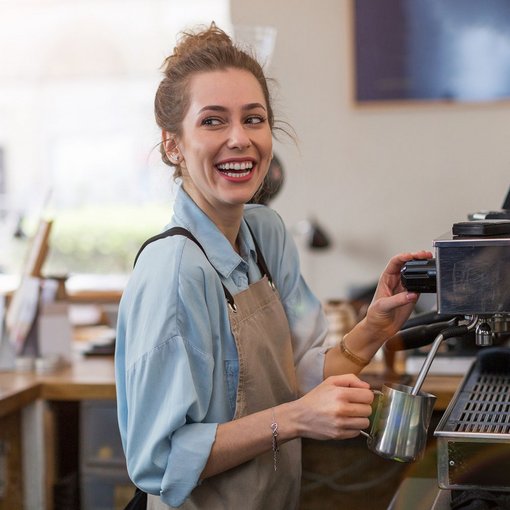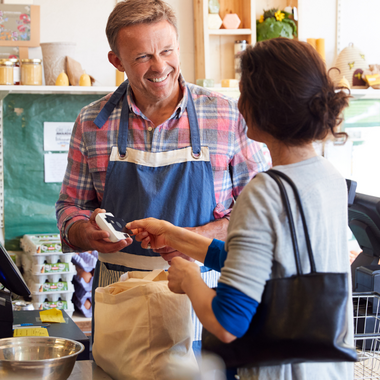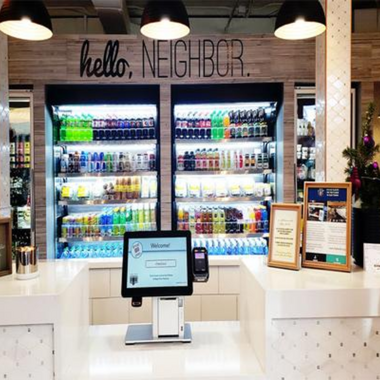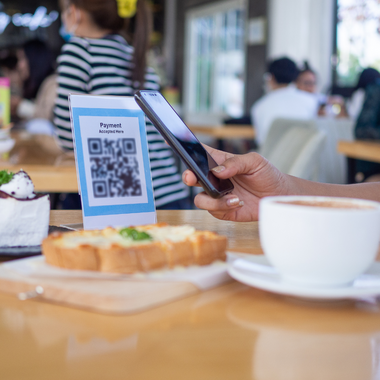
- Four minutes read
Why technology has businesses optimistic about the future of in-store retail
The global pandemic and social distancing measures have had a significant impact on the ability for stores to do business as ‘usual’ throughout 2020. But businesses remain optimistic about the future, and cite evolving checkout technology as the reason why.
The global pandemic and social distancing measures have had a significant impact on the ability for stores to do business as ‘usual’ throughout 2020. But businesses remain optimistic about the future, and cite evolving checkout technology as the reason why.
It will not be a surprise to anyone to learn that COVID-19 has had a negative impact on stores in North America. Social distancing measures have and continue to be in place, including many premises being forced to close altogether for a period of time. These measures, coupled with the legitimate health concerns of consumers related to public interactions, has resulted in reduced footfall and revenue.
One consequence of COVID-19 has been an acceleration of consumers transitioning their shopping preferences to eCommerce and mCommerce. According to research from Paysafe’s Lost in Transaction: Consumer payments, 18% of all consumers are now shopping online for the first time due to COVID-19, and this increases to 25% in the US. And this isn’t a short-term concern for in-store retail; 38% of consumers say they are planning to shop more online following the conclusion of the pandemic because they find it more convenient (65%) and more enjoyable (42%).
The view from businesses
Stores have confirmed our suppositions about their volume of business during COVID-19. According to research from Paysafe’s latest Lost in Transaction report, 44% of stores said they have lost revenue since the outbreak of COVID-19 and of these, 93% say their sales have not returned to pre-COVID-19 levels. Of the 38% of stores that say their revenue has increased in 2020, 64% attribute it to online sales and only 17% say they have done more business in store. So, in total, less than 7% of businesses have grown their in-store sales since the start of the pandemic. Considering the measures put in place for stores because of the pandemic, it is a surprise this figure is not lower.
With this in mind, it is natural to assume that stores do not have a positive outlook when it comes to their future. However, this isn’t the case; when asked, 76% of in-store businesses in North America told us that they are optimistic about the future of retail verses 21% who were pessimistic. And COVID-19 is very much factored into their reasoning; only 7% of businesses say COVID-19 hasn’t impacted their view at all and 54% say COVID-19 has significantly affected why they are or are not optimistic.
So why are in-store businesses optimistic?
A reason for this outlook may be the opportunity presented by 5G to evolve and revolutionise the in-store experience by overhauling the checkout. With the availability of 5G, retail is opening up to a whole new range of technologies such as virtual reality and augmented reality. In fact, 47% of stores say that the onset of 5G will end the traditional checkout and 53% say frictionless checkouts are the future of retail.
Reducing friction at the checkout is already a priority for in-store businesses and almost two-thirds (64%) of businesses say that integrating new technology into their store to enhance the customer experience is a priority for them. Customer experience is also key to the success of the checkout with 54% of businesses saying COVID-19 has accelerated their plans to reduce times customers spend at the checkout and 57% say that reducing the amount of time customers spend at the checkout is their most important concern. And while these concerns have been very real during COVID-19 to date, there is no doubt that there is hope on the horizon that the technology is evolving.
The omnichannel experience
For retail merchants, one big advantage over online-only businesses is the ability to offer consumers an omnichannel, real world and digital experience. This omnichannel integration goes beyond purely enabling people to pay digitally in store, it provides them with an opportunity the compete with online merchants more effectively.
Having the right payment option available is crucial to making this a success, with 67% of businesses saying that COVID-19 has changed the way they think about accepting payments. 58% of in-store businesses are currently refocusing their business towards online sales, but enabling consumers to pay in person, for example offering card (44%) and contactless (44%) payments on delivery and curbside pick-up (35%) has been vital. These are some of the strategies to have paid dividends during COVID-19; 80% of businesses that evolved their payment methods during COVID-19 say this increased their sales. Paysafe’s research report on the pandemic’s impact on consumer trends revealed that though contactless adoption is still more limited in the United States than other global markets, 60% of Americans and Canadians said they’re more comfortable using contactless cards now compared to a year ago.
Looking forward, 77% of businesses have ambitions to enable customers to buy products and services in-store via a mobile app checkout within two years and 53% of businesses think that Amazon-Go style payments where consumers are automatically charged when leaving a store with items is the future of retail.
We can see that businesses who embraced new payment technology when the COVID-19 pandemic hit, have reaped rewards already. With the roll out of 5G and businesses planning to go even further with the payment options they offer, it is perhaps not so surprising that businesses are upbeat about the future.




